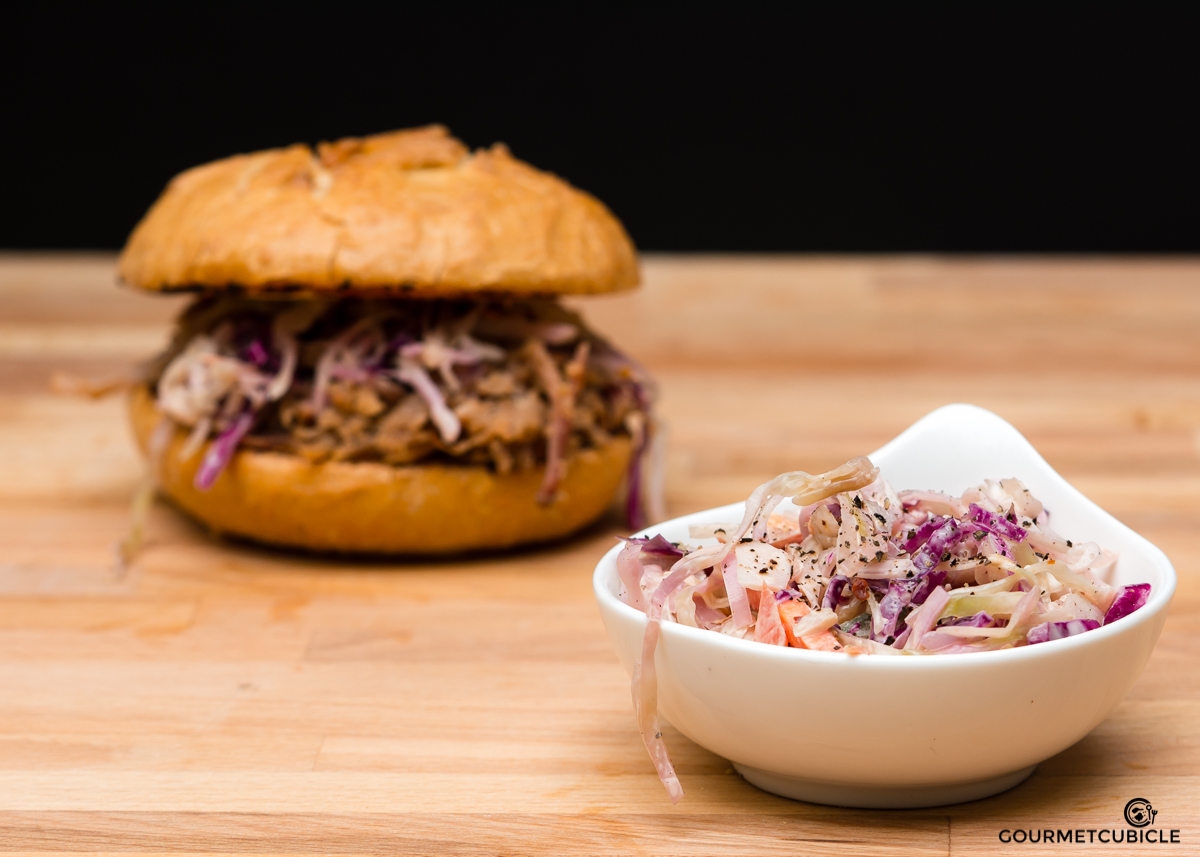Creamy Tomato Sauce with Prawns
I tried to stay way from writing on my blog during our trip to Europe, but as it turns out, I just can’t do it. I miss it too much. Developing, testing, tweaking and writing recipes are now part of my everyday life ever since gourmetcubicle launched back in April. It does, however, feel refreshing not to do the cooking for a while, but instead just enjoying that of others. It’s great being on a food journey where I don’t have to care about shopping for ingredients, cooking, taking photos, and documenting recipes, but instead just relaxing, finding inspiration, discovering new flavors and thinking about how to integrate them into my dishes.
Roni and I are on a vacation around Eastern Europe and even though we’ve been here for less than a week, it has been very eventful. The trip started not so great when we found out that our flight from Austin to Chicago was delayed to the point that there was no way we would catch our connection to Berlin, where we had planned a full day layover to explore the city. I was already dreaming of the delicious Turkish doner kebabs that you can buy from street vendors and the crispy pork knuckles they serve with sauerkraut and potatoes in the traditional beer gardens. Both of us were pretty disappointed to say the least, but we did a great job at not letting that ruin the start of the trip
The good news about this whole re-routing was that we arrived to Budapest a half day earlier than planned. That meant more time to introduce Roni to the great city of Budapest. Budapest is amazing- beautiful architecture, great food, lots of friendly people and of course old friends. We stayed at the home of Erika and Pista along with their three daughters. They are Roni’s childhood friends, or rather her Hungarian family, as she likes to call them. They did everything in their power to give us the famous Hungarian hospitality and abundance. Erika cooked traditional Hungarian dishes every day and baked amazing cakes, which made Roni very happy. Every morning she prepared platters of cheeses, cured meats and homemade jams. We had bowls of fresh grapes, pears, apples and plums for snacks. We all dined together every night sharing our travel stories and childhood memories. Hearing the girls talk about how they used to break the child lock on the cable box to watch Tales from the Crypt, shave their arms to their parents’ horror, and play games involving eating disgusting concoctions of toothpaste, salsa, mustard and any other condiment they could find was very entertaining. The image that Roni had always painted of her young self was that of a shy and innocent little girl so these stories added a new insight into her childhood. Great times filled with laughter and joy!
Budapest is a must-see in Europe. The city, the people and the food are all top notch. A few years ago the Hungarian food scene had a revival and the fine dining culture has since blossomed. Good food always existed in Hungary, but it was mainly based on hearty Hungarian staples like pörkölt, paprikás, roasts, goulash and creamy soups. Beer, wine and the national spirit, pálinka, were the preferred drinks, with whiskey coke being considered a cocktail. The pride that Hungarians have in their food significantly slowed down the development of quality and affordable ethnic restaurants. But things have started to change, and I think this has to do with all the foreigners who have moved to Budapest and brought new interesting ingredients and flavors with them. Budapest has become a bit of a melting pot where Mexican, Asian, Indian, and Russian dishes have made their way into the otherwise very conservative cuisine here.
As far as Italian cuisine is concerned, I think it’s the most widespread of all cuisines around the globe. I haven’t been to a country that didn’t have at least one Italian restaurant. It doesn’t matter if you’re in Hungary, Singapore, Peru or Japan, you’ll most likely find a pasta Bolognese or Carbonara to eat. i think that the main reason for that is that Italian dishes are filling and easy to make, not to mention how delicious they are. You don’t have to be a kitchen-guru to be able to prepare a simple Cacio e pepe or Spaghetti Pomorodo.
As for today’s recipe, this Creamy Tomato Sauce with Prawns is one of those easy to make Italian dishes that will leave your dinner guests impressed. In half an hour you can fix an easy, healthy and flavorful sauce that is infinitely better than that canned salty artificially flavored junk that you find in stores. Some of them may taste good, but once you take a look at the list of ingredients you’ll be shocked by the amount of sugar (or rather, corn syrup) and salt they contain. By making your own pasta you are in control of the ingredients. You know exactly how much of each ingredient goes into it and you can adjust them to your own taste. Enjoy!
Creamy Tomato Sauce with Prawns
Serves 4
Prep time: 10 minutes
Cook time: 35-40 minutes
Ingredients
- 1 lb prawns, peeled and deveined
- 1 tsp black pepper freshly ground
- 1/2 tsp kosher salt
- 2 TBS oil (sunflower, canola or peanut oil)
- 1 TBS unsalted butter
- 1 tsp hot sauce (Cholula or Tobasco)
- 1 leek, finely chopped
- 1 medium shallot, finely chopped
- 2 garlic cloves, crushed and chopped
- 1/2 cup dry white wine
- 1 can (15 oz) diced tomato (preferably San Marzano)
- 2 cups stock (chicken or vegetarian)
- 2 anchovy fillets, optional
- 2 TBS tomato paste
- 1/2 tsp red chili flakes
- 8-10 fresh basil leaves, roughly chopped
- 1 TBS sugar
- 1/4 cup Parmesan cheese, freshly grated
- 1/2 cup heavy cream
- 1-2 tsp fresh lemon juice, optional (or lime)
Instructions
- Place clean shrimp in a bowl and sprinkle with 1/4 teaspoon salt and 1/2 teaspoon pepper. Toss to make sure the shrimp are evenly coated.
- In a large skillet heat the butter and 1 tablespoon oil over medium high heat. When the butter starts foaming add shrimp and hot sauce. Cook for 3 minutes stirring occasionally to make sure the shrimp cook evenly on each side.
- Transfer shrimp to a plate and set aside.
- Add the rest of the oil to the pan and heat until the it easily slides across the pan. Add leeks and shallots and cook for 5 minutes, stirring occasionally. Add garlic and cook for another minute or so.
- Pour in white wine and cook for 3-5 minutes until the wine starts to evaporate.
- Add diced tomato and stock and cook for 5 minutes, stirring occasionally.
- Add anchovies, tomato paste, chili flakes, basil and the rest of the salt and pepper to the skillet and reduce the heat to medium-low. Cover with a lid and let it simmer for 15 minutes. Stir occasionally.
- Add sugar and parmesan cheese and stir well.
- Pour in heavy cream and stir. Crank up the heat to medium-high. Bring to a boil (about 1-2 minutes) then immediately remove from the heat. Taste to adjust seasoning.
- Mix in the shrimp, sprinkle with lemon juice and give it a final stir. Serve with capellini, spaghetti or linguini.
Notes
- Use only the white part of the leek. For instruction on how to clean leek check out my Creamy Leeks with Pan Roasted Chicken recipe.


























